I have visited Portugal several times and spent time in Lisbon, its charming and historic capital city.
Portugal has a long, fascinating and sometimes dark history. It has been a European power state, a participant in European Royal dynasties and a centre of global Empire.
Portugal was a launchpad for the European colonisation of South America. This is a chapter in world history which, along with the British-French colonisation of North America and the Spanish colonisation of South and Central America, elicits great controversy to this day.
All of that was a long time ago and Portugal fell behind the other European states during the eighteenth and nineteenth centuries, industrialising less than other European countries. The fact that Portugal missed much of the frenetic industrialisation and upheaval which swept Europe in those times left the country with a less changed society and a more traditional outlook. This traditionalism was exasperated somewhat after the revolution of 1910 and the establishment of a military dictatorship in 1926 which persisted for almost 50 years. By the time of the introduction of democracy in 1975 Portugal had settled into a pace of life which is notably slower than in Western Europe.

Portuguese dog chills out in the city of Faro
Portugal and why I love it is quite well summed up by the picture above of the chilled dog. It was a lovely warm day in spring and I was on holiday in Portugal when I took this photograph.
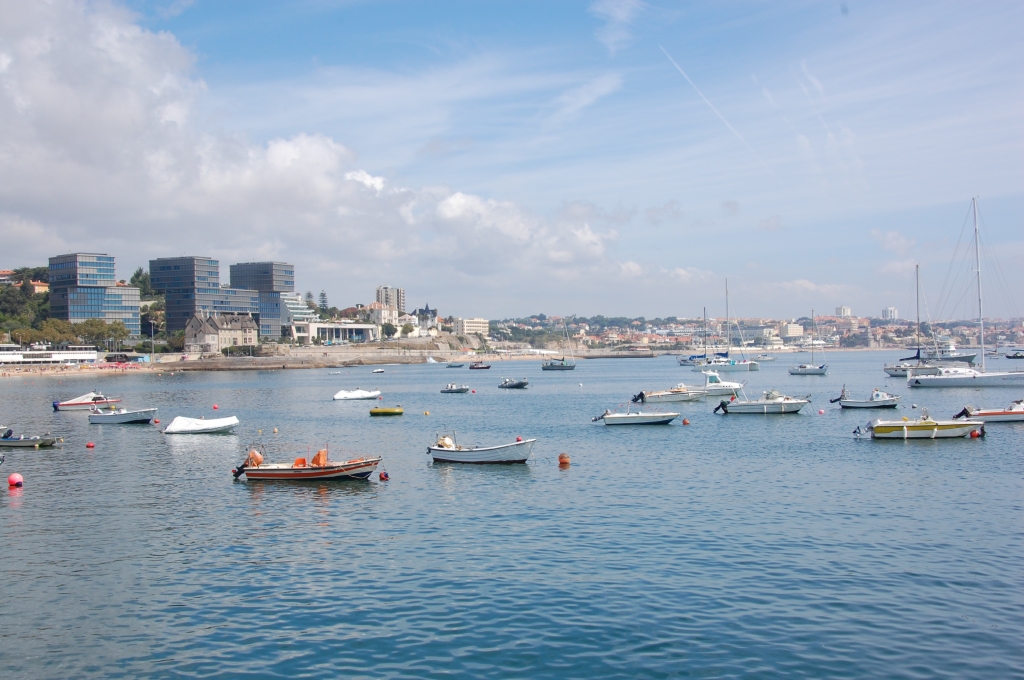
Boats lie in the harbour at Cascais, Portugal
Portugal's modern image is summed up by the photograph above, taken in the southern region of Estoril, as a playground for Europeans on holiday. It is a great place to visit for a holiday. The people are friendly, the climate is great, there is history and culture, and the food is generally great.
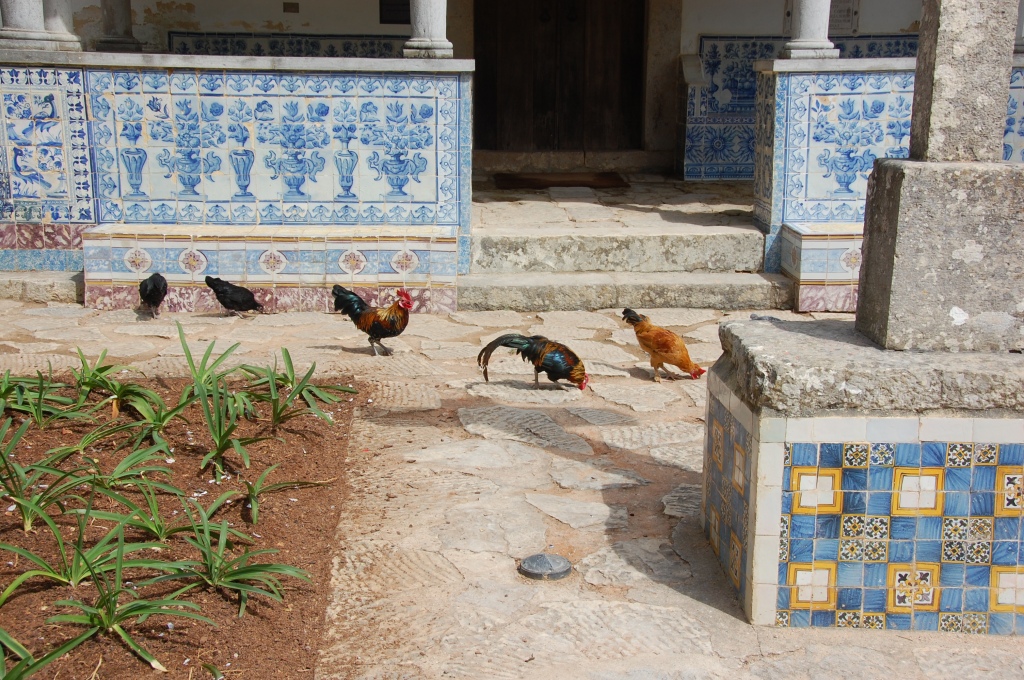
Chickens strut their stuff amid lovely tiling in Cascais, Portugal
While wandering in the sunshine on a summer trip to Cascais, I came across a scene that one would never see in a town in England - chickens free to roam in a garden. This represents a charming aspect of Portugal, a country which has retained more of its rural traditions than much of Western Europe.
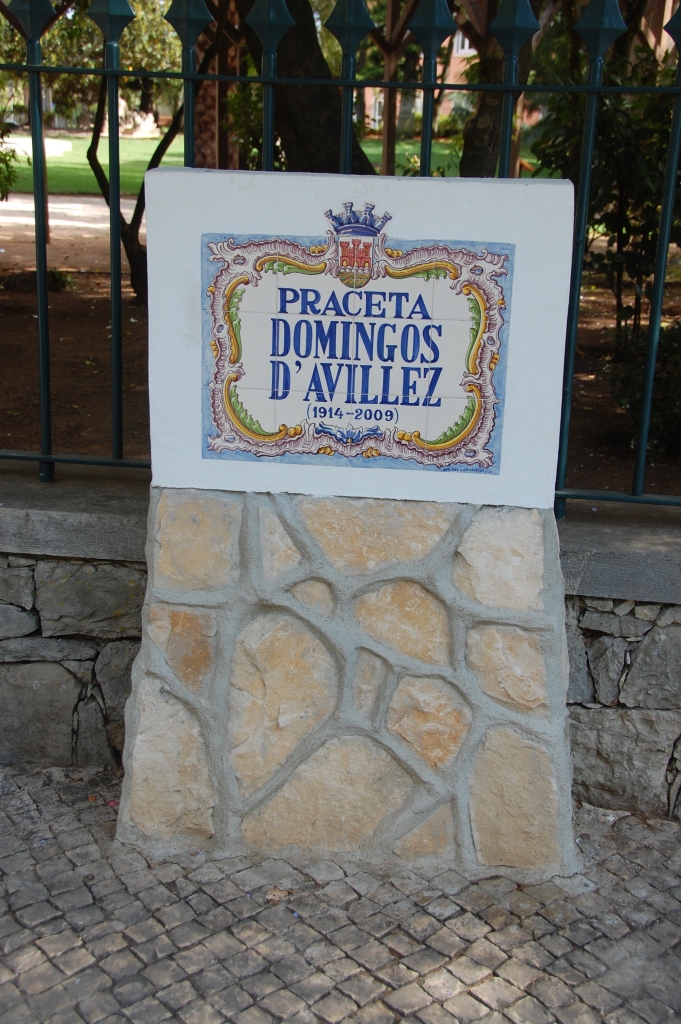
Portuguese street sign
I was fascinated by the Portuguese tradition of tiling building interiors and exteriors, and street signs such as the one above. The damp climate in England would not allow such a tradition, but here the warm and more dry climate suits this kind of tiling, which the Portuguese use to beautiful effect.
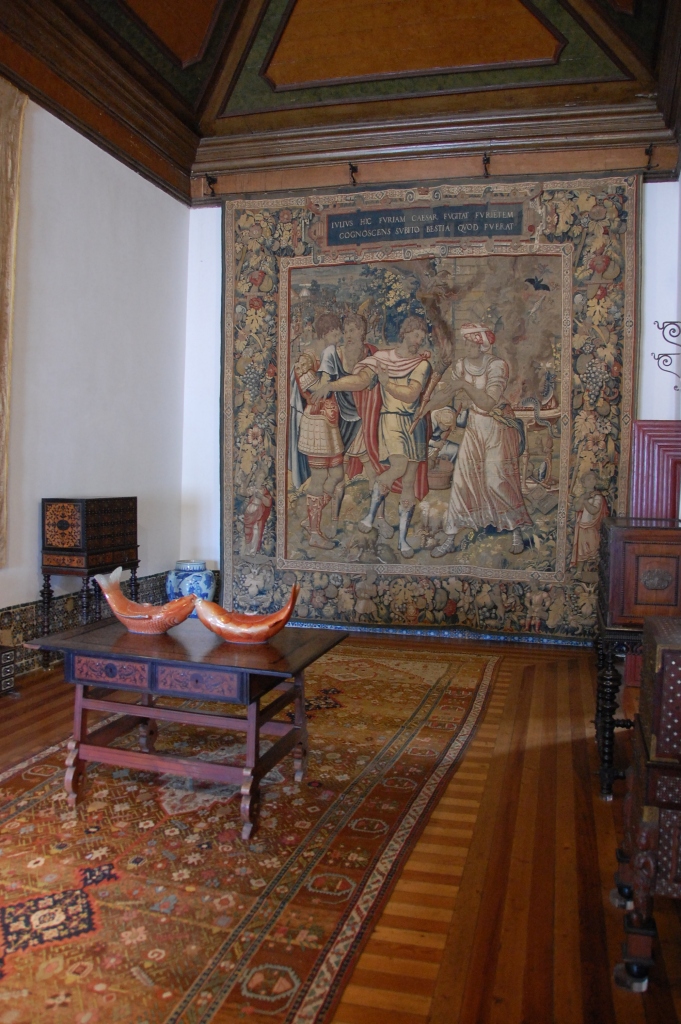
Tapestry in Sintra, Portugal
The conquest of South America brought great wealth into Portugal and from this period comes a lot of very impressive architecture and decorative art such as the example seen above. It is also very evident that the influence of Christianity on the culture and history of the nation has been profound. In the tapestry above we see the influence of Christian culture.
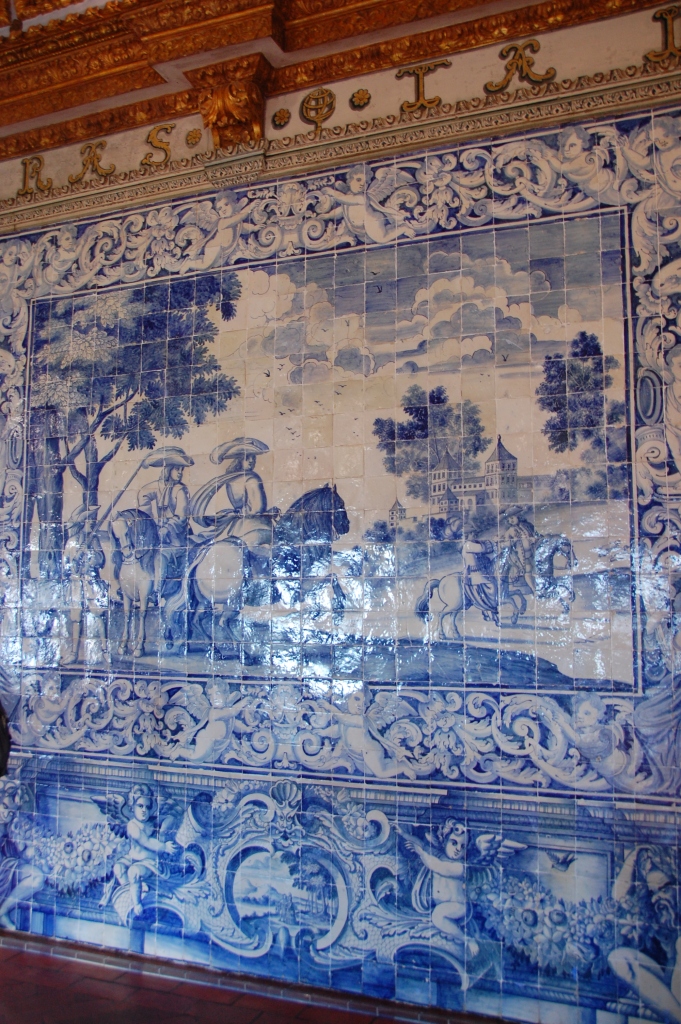
Portuguese tiling
Above we have an example of historic Portuguese interior glazed tiling. At the bottom are the Angels, ad in the main frame itself are the aristocratic hunters with the appropriate mansion in the background.
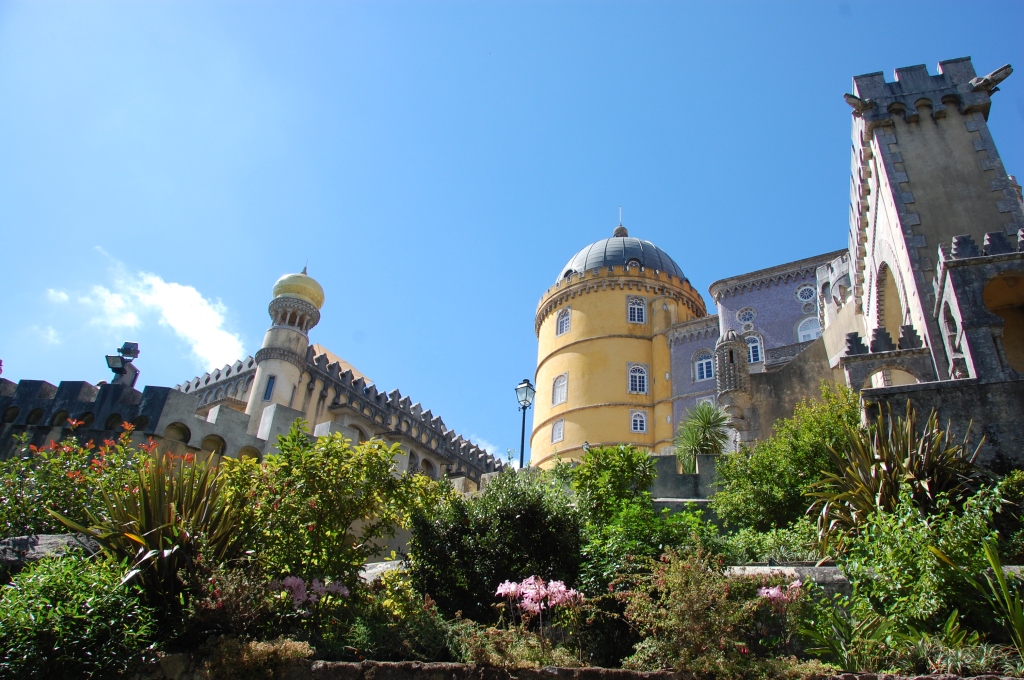
Impressive architecture at the Palacio de Pena in Sintra, Portugal
One of the last monuments to the lifestyle of the Portuguese aristocrats is the Palacio de Pena in Sintra, southern Portugal. The very beautiful palace is now a museum and the equally beautiful surrounding area is a national park. The palace is very ornate - maybe too ornate - but the effect is quite mesmerising, explaining why this venue is one of the most popular tourist sites in the world.
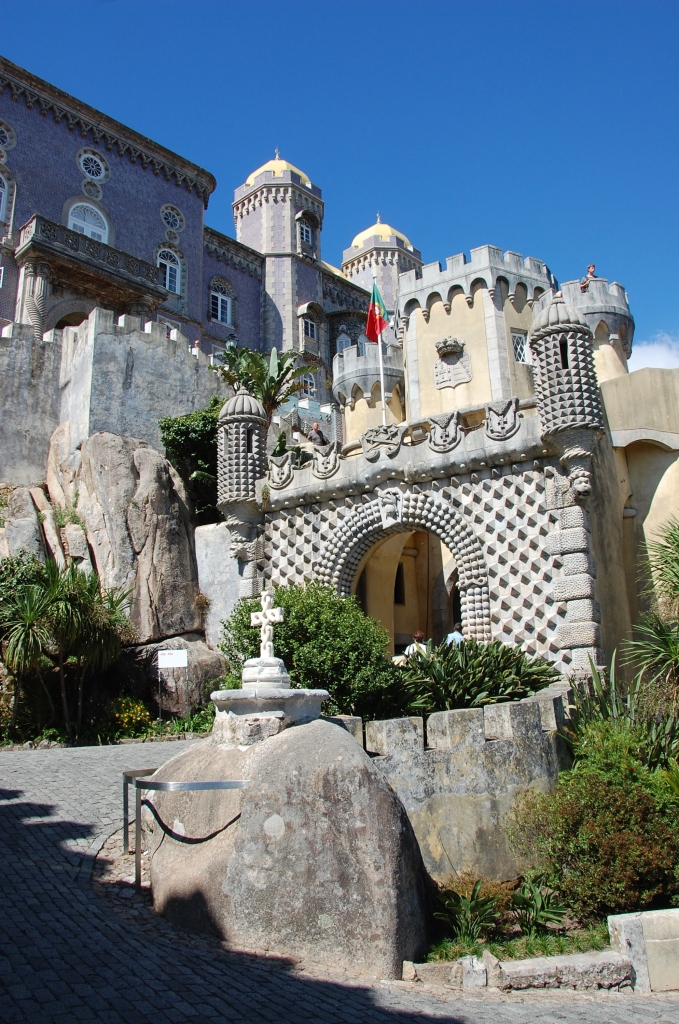
Ornate architectural stonework in Sintra, Portugal
I was impressed by the skill of the Portuguese craftsmen, which here is second to none. The Palacio is such a contrast with the more sombre mansions built in Britain at around this time.

Romantic lovers on a beach in southern Portugal
The beaches of the Estoril in Southern Portugal are renowned for their soft sand, blue seas, sunshine and pleasant air. Add that to good food and drink and in the quieter places, and a certain calm, and Portugal soon wins your heart.
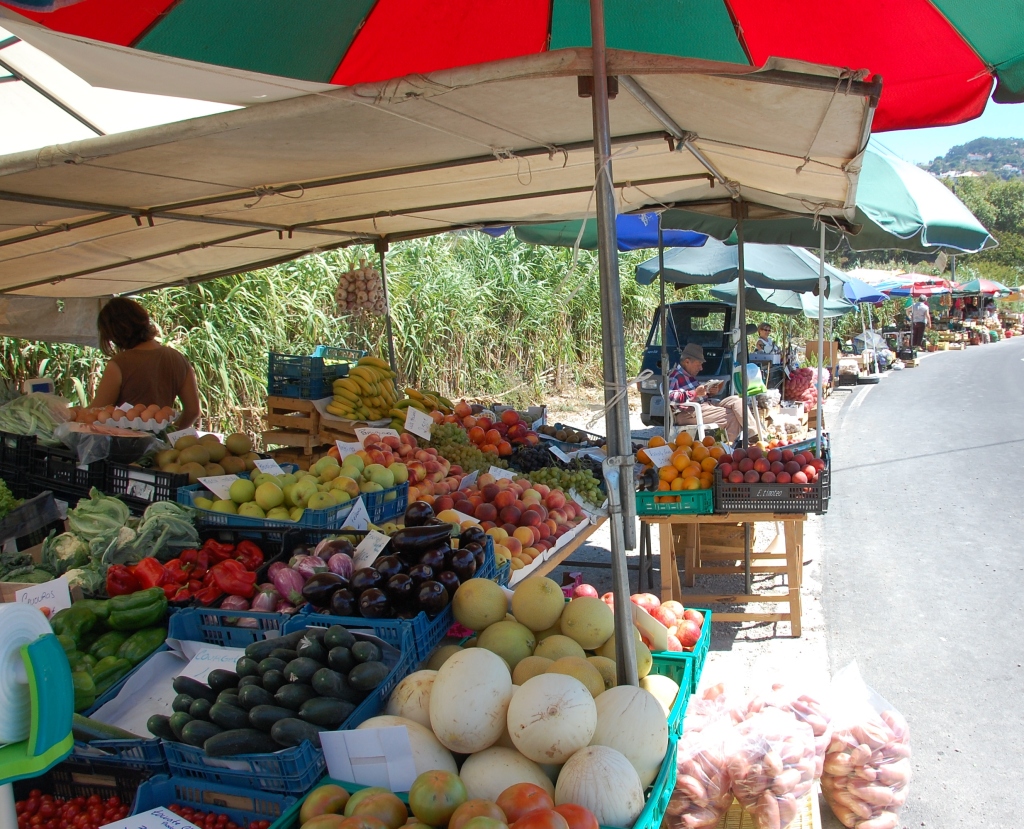
Fresh produce on a street stall in southern Portugal
Like most Mediterranean countries Portugal has a flourishing network of formal and informal fruit markets. We found this one by a roadside. The produce was fresh and delicious.
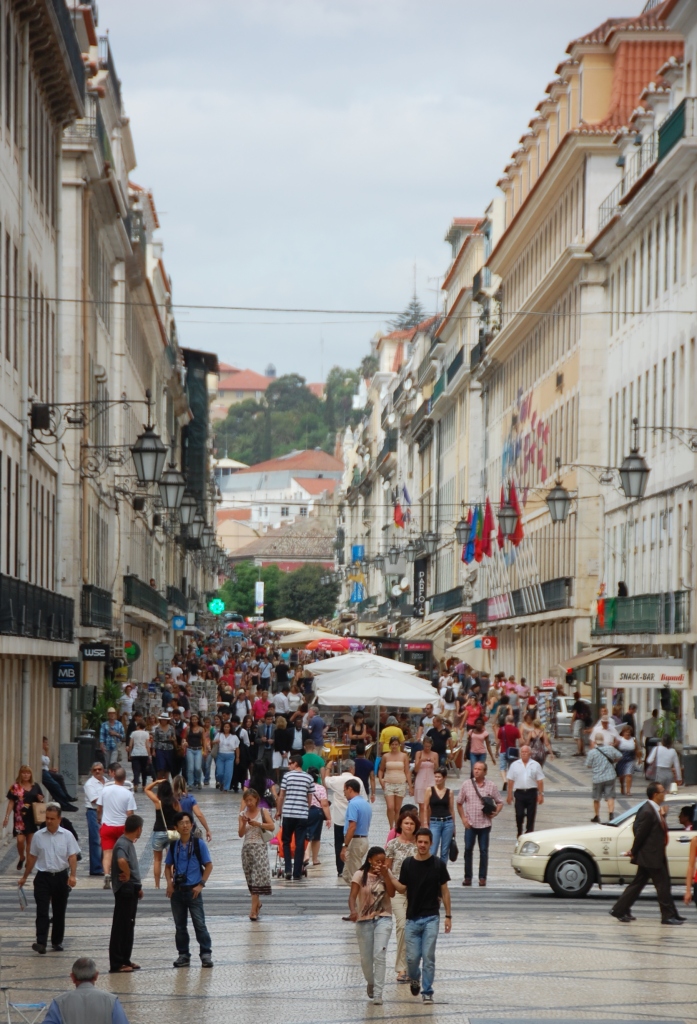
The bustle of Lisbon, Portugal
In addition to its long history and culture, Lisbon is a cosmopolitan centre of the nation and its economy. There are many delightful shopping areas and a vibrant cafe culture especially in the summer.
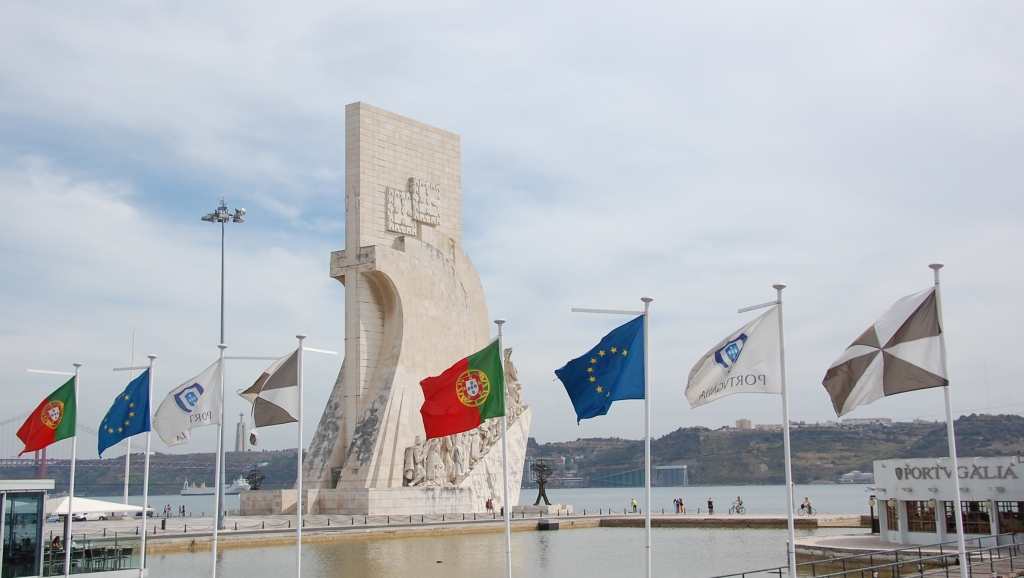
The monument to the maritime explorers in Lisbon, Portugal
In Lisbon there is a modern and beautiful monument, called Padrão dos Descobrimentos, dedicated to the great Portuguese explorers. Men such as Vasco de Gama set off from this very place on the banks of the River Targus, after receiving blessings from the nearby monastery. They explored the far away places of the world, such as India, in search of conquest and treasure and controversially found both.
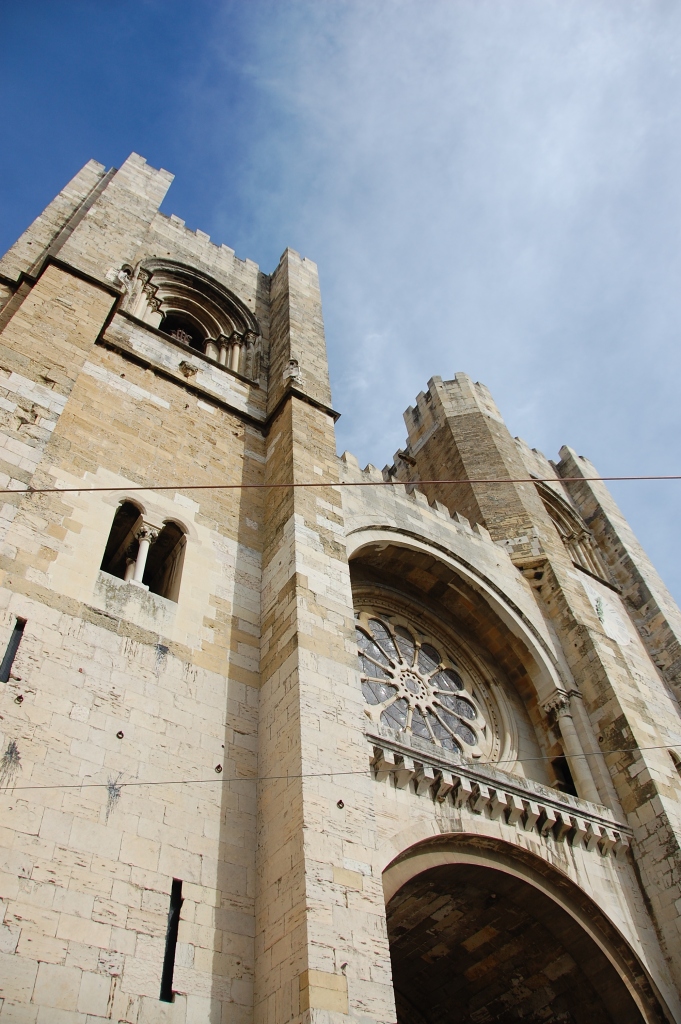
The Cathedral of Saint Mary Major, in Lisbon, Portugal
I noted that no community in Portugal is without a church, and it is usually the most historic and magnificent building in town. Here is the Cathedral of Saint Mary Major in Lisbon. Note the neo-fortifications at the top and the lack of the sort of Gothic decoration seen in Western European cathedrals.
I notice that Portuguese are not a people who favour overt formality and nor are they a people prone to drama. I surmise that this is due to their long history and an attitude often found in Mediterranean lands which can be described as 'Whatever will be will be'. Certainly in my conversations with them they seemed quite fatalistic about life in general.

Grão Vasco's 'Jesus in the house of Martha and Mary'
Portugal has of course its own history of art. Several master artists have left a legacy of good work, an example of an acknowledged masterpiece is seen above, by the old master Grao Vasco.
One of Portugal's best known modern artists is the fabulous Paula Rego.
For more of my blogging on the delights of Portugal see my page about the city of Faro.









